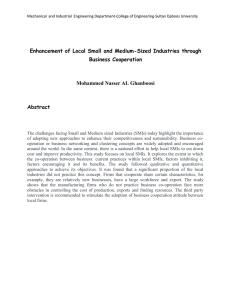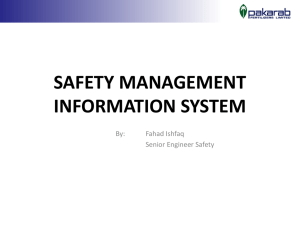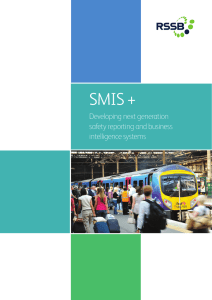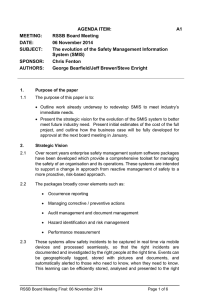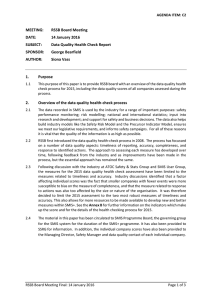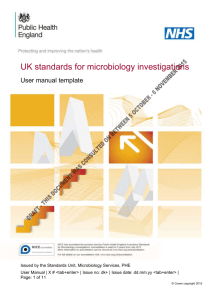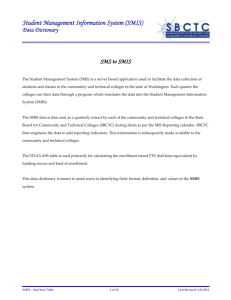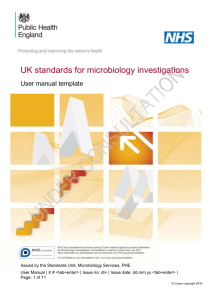Chapter 8 PPT
advertisement
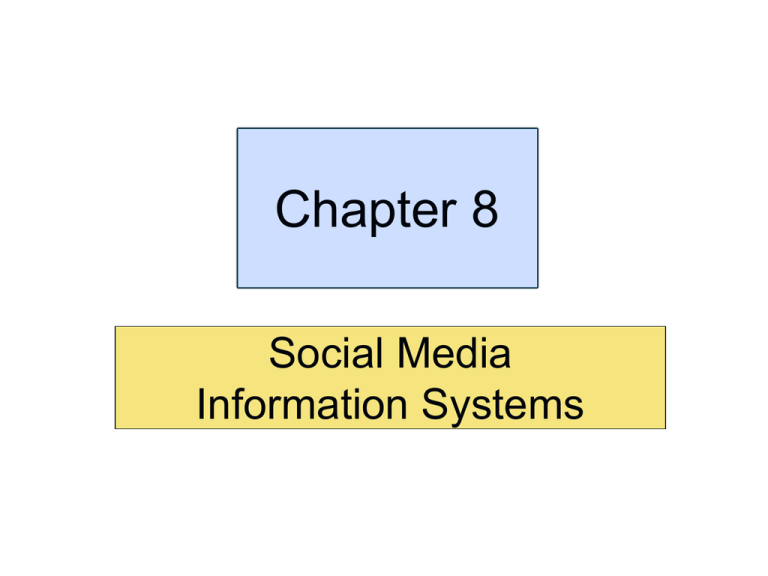
Chapter 8 Social Media Information Systems Study Questions Q1: What is a social media information system (SMIS)? Q2: How does SMIS advance organizational strategy? Q3: How does SMIS increase social capital? Q4: How can organizations manage the risks of social media? Q5: Where is social media taking us? 8-4 Important Terms • • • ICT = Information Technology + Communication Technology Convergence of computer-based information technology and telecommunication technology Strategic information systems – any information system used for strategic purpose(s) The networking age we are in Pre-Internet Systems Postal mail, telephone, fax Web 2.0 Google, Facebook, Wikipedia, YouTube E-Commerce Web Storefronts Interorganizational Systems Enterprise 2.0 Social CRM, SOA Web 2.0 • • • • • Web applications that facilitate participatory information sharing, interoperability, user-centered design, and collaboration on the World Wide Web. Examples - Social networking sites, blogs, wikis, video sharing sites, hosted services (ASP and ISP), mashups and folksonomies (collaborative tagging, social bookmarking). 43 Things (http://www.43things.com/home/) Diigolet.com, Delicious Web 3.0: the Semantic Web and personalization – the computer is generating information rather than humans. 8-7 Q1: What Is a Social Media Information System (SMIS)? • Social media (SM) – Use of IT to support sharing content among networks of users – Enables communities, tribes, or hives – People related by a common interest • Social media information system (SMIS) – Supports sharing of content among networks of users 8-8 SMIS: Convergence of Disciplines 8-9 SMIS Organizational Roles 8-10 Community/Social Media Site Relationship 8-11 Social Media Sponsors Not Casual Commitment 8-12 Social Media Application Providers • Facebook, Twitter, LinkedIn, and Google create features and functions of the site • Free to users • Sponsors may or may not pay a fee • Most earn revenue through some type of advertising model 8-13 Components of SMIS 8-14 Q2: How Do SMIS Advance Organizational Strategy? • Defenders of Belief – Share a common belief – Seek conformity – Want to convince others – Facilitate activities like sales and marketing – Form strong bonds and allegiance/loyalty to an organization 8-15 Q2: How Do SMIS Advance Organizational Strategy? (cont’d) • Seekers of the Truth – Share common desire to learn something, solve a problem, make something happen – Seldom form a strong bond 8-16 SM in the Value Chain Activities 8-17 Social Media and the Sales and Marketing Activity: Social CRM • Relationships between organizations and customers emerge in a dynamic process • Each customer crafts relationship • Blogs, discussion lists, FAQ, user reviews and commentary, other dynamic content • Customers likely to generate most business get most attention 8-18 Social Media and Customer Service • Product users help each other solve problems – via user, crowd sourcing • Selling to or through developer networks most successful • Risk loss of control (Discursive Power) 8-19 Social Media and Manufacturing and Operations • • • • Crowdsourcing Enterprise 2.0 Folksonomy SLATES 8-20 McAffee's SLATES Enterprise 2.0 Model 8-21 Social Media and Human Resources • Employee communications, using internal, personnel sites • Ex: MySite and MyProfile in SharePoint • Risks: 1. Forming erroneous conclusions about employees 2. Site becomes defender of belief or spreading unpopular management message 8-22 Q3: How Does SMIS Increase Social Capital? Types of business capital • Physical capital – factories, machines, manufacturing equipment • Human capital – human knowledge and skills • Social capital – resources, benefits from social relations 8-23 What Is the Value of Social Capital? 1. Information 2. Influence 3. Social credentials 4. Personal reinforcement • Value enhanced by Number of relationships, strength of relationships, and resources controlled 8-24 How Does Social Capital Benefit You and Organizations? Social Capital—investment in social relations with expectation of returns in the marketplace Adds value in four ways: 1. Information about opportunities, alternatives, problems and other factors 2. Influence decision makers in your organization or others 3. Social credentials from linking to network of highly regarded contacts 4. Personal re-enforcement of professional image and position 8-25 Using Social Networking to Increase the Number of Relationships 8-27 Using Social Networks to Increase the Strength of Relationships Three ways to increase social capital 1. Ask them to do you a favor 2. Frequent interactions strengthen relationships 3. Connect to those with more assets • Social Capital = NumberRelationships x RelationshipStrength x EntityResources 8-28 Q4: How Can Organizations Manage the Risks of Social Media? • Managing Risk of Employee Communication • Three Pillars of Social Organizations 1. Disclose 2. Protect 3. Use Common Sense 8-30 Intel’s Rules of Social Media Engagement 8-31 Managing the Risk of User-Generated Content Sources of Problems • Junk and crackpot (impractical) contributions • Inappropriate content • Unfavorable reviews • Mutinous (disobedient, insubordinate) movements 8-32 Responding to Social Networking Problems • Leave it • Respond to it • Delete it Determine how to deal with problematic content before engaging in social media. 8-33 Q5: Where Is Social Media Taking Us? • Vendors lose (have no) control of the customer relationships • Employees craft own relationships with employers • Employers provide endoskeleton to support work of people on exterior 8-34 How Does the Knowledge In This Chapter Help You? • Components SNIS and commitment organization makes • How organizations use SNIS to achieve strategies across primary value chain activities • How SNIS increase social capital • How organizations need to manage SN risk • SM challenge to you in future 8-35 Ethics Guide: Hiding the Truth? • How is social networking different in business than in private life? • Do the ethics vary between private and business use of social networking? 8-36 Guide: Social Recruiting • Employees sharing personal information on SN • Technology blurs line between work life and home life • Work is portable and always on • Be careful about what you say • Work networks are not social networks 8-37 Guide: Social Recruiting (cont’d ) • Use communities to locate prospects • Get a sense of candidate to find any potential behavior or attitude problems • Exposing protected data illegal to use for hiring decisions • Treat every candidate the same • Join LinkedIn, use Google + circles • Keep your personal social data out of any circle that can be publicly accessed • Social media is a double-edged sword 8-38 Case Study 8: Sedona Social • Suppose Sedona Chamber of Commerce hired you as manager of community social media • Want you to provide advice and assistance to local businesses in development of social media sites and manage CoC’s social media presence 8-39
